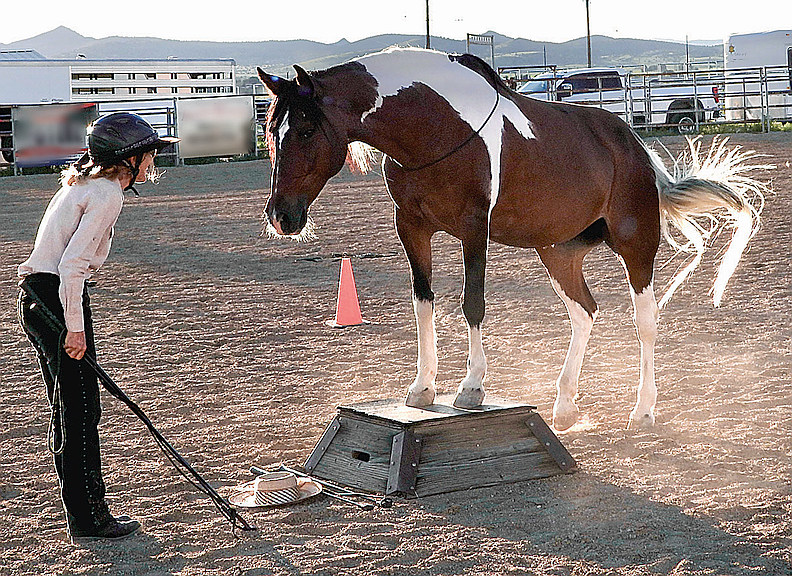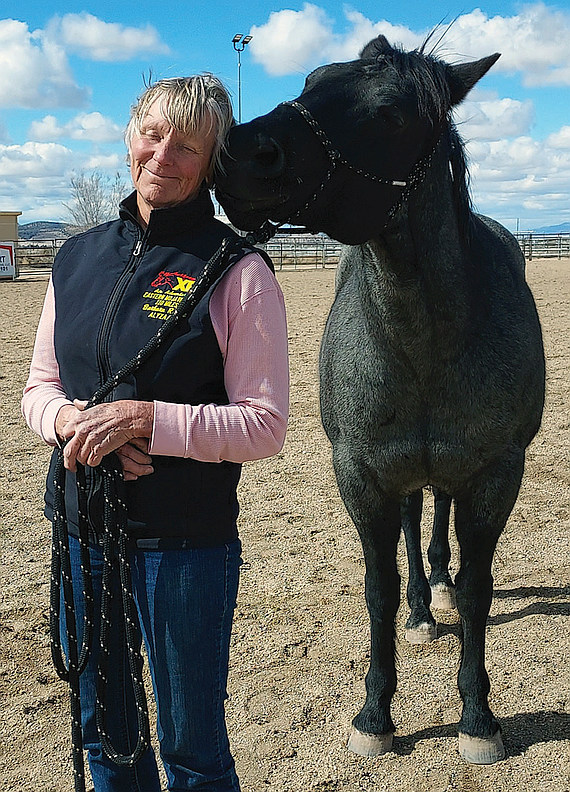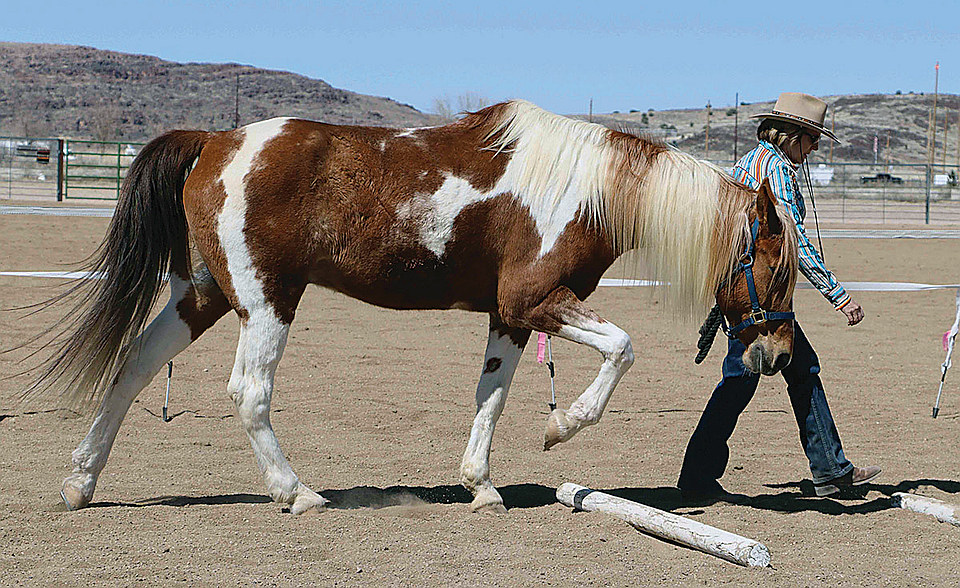By Rita Thompson-Tinsley

What in the pasture world could be more ideal than a life of freedom? Imagine a lifestyle of work and play absolutely untethered, free of encumbrance and constraints. That’s what your horse will experience with Liberty training. And you, the handler, will experience the pure joy of the connection and partnership you’re developing minus the hindrance of halters and ropes.
Don Jessop of Mastery Horsemanship details three different types of Liberty training. The most common method he discusses is ‘Round Pen Liberty/Foundation Liberty’. This method is designed to teach a horse how to move freely in every gait and to transition smoothly as they change directions. You are working with your horse in a ‘driving away’ fashion, pushing him away from you using your training stick.
Jessop’s second style of training he calls ‘Natural Liberty Training,’ leaving a rope and halter on your horse while performing complex maneuvers. Eventually, you will toss the rope over your horse’s back testing their skill without using the rope. The next step would be to remove the halter and test the horse again. Soon you would be expected to work with your horse minus the aid of any tool support.

Dan’s third method of training he calls ‘purest liberty’ which is all about connection. He explains, “Your horse must learn, and value being connected to you above all other things.” This style of his training never uses ropes for guidance.
“The skills required to encourage that simple task and discourage anything else requires finesse. Push too hard and you get a resentful, fearful horse. Push too little and you get nowhere. The balance is beautiful and worthy of pursuit,” states the trainer.
Local instructor and equine enthusiast Sara Chambers describes the Liberty training process. “It is very empowering to have a horse (a large prey animal) want to be with you (a large predator) especially when he is free to make his own choices.”
Key elements that she stresses for introducing your horse to Liberty are safety (survival needs), comfort (physical needs), and play (social needs). When you begin your Liberty sessions, you will want to convey to your horse and continually assure your horse that he is safe, so that he will be confident with you and comfortable with his environment.
There are many dynamics used in practicing Liberty, and one of the most vital is The Release. A common philosophy in natural horsemanship is that it is the pressure that motivates your horse, while it is the release that teaches your horse.

The Release is the part of the exercise when you pause, release all pressure, and allow the horse to rest. Liberty exercises may include executing a set pattern in an area with your horse or working with challenging obstacles.
What makes the Liberty teachings of Chambers so fascinating is her adept knowledge of equine neurology, psychology, and behavior ascertained from her studies of horses in the natural herd, in nature’s environment. Her scientific research and studies bring her students a more realistic view of why their horse reacts and responds in certain ways, encouraging the student to approach their horse using more suitable methods. According to Sara, “Horses are hypervigilant about reading you.

Renowned horseman Jack Brainard says, “The greatest tool of an accomplished horseman is the power of observation. When you show your horse that you are aware of his awareness, you become more horse-like because the herd relies on its members’ awareness of each other and the environment to function and survive. When you notice even the smallest or most subtle expressions of your horse, it tells him that you are with him in the present moment and worthy of his cooperation.”
Sara Chamber’s student Meg Goodyear shares, “I decided to participate in Liberty classes to learn how to clearly communicate with and build a solid partnership with my mule Honeybun. I love the give and take of the Liberty process, especially when cues and body language are really in sync. We have truly improved our mutual trust and respect. It does not always flow perfectly, but I sure do enjoy her shenanigans, however naughty.”
In the world of horses, at the barn, in the arena or in the wild, you must agree there is no better ambition to achieve than liberty and freedom for all.


